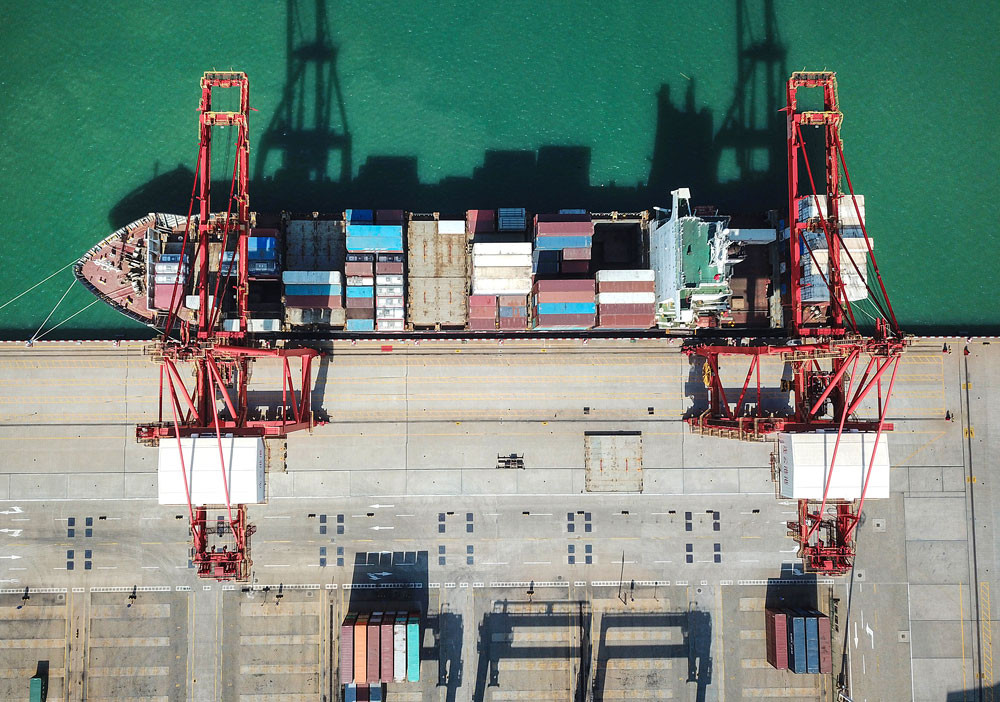Popular Reads
Top Results
Can't find what you're looking for?
View all search resultsPopular Reads
Top Results
Can't find what you're looking for?
View all search resultsChina's imports pick up further, exports strong in March
The readings highlight the impact of vaccines and the easing of containment measures are having, with expectations for further improvement over the next few months.
Change text size
Gift Premium Articles
to Anyone
 At high stakes: A cargo ship berths at a port in Lianyungang in China’s eastern Jiangsu province, on May 8. China’s exports fell more than expected in April while imports rose, official data showed on Wednesday, ahead of high-stakes talks aimed at resolving a trade war with the United States.
(AFP/-)
At high stakes: A cargo ship berths at a port in Lianyungang in China’s eastern Jiangsu province, on May 8. China’s exports fell more than expected in April while imports rose, official data showed on Wednesday, ahead of high-stakes talks aimed at resolving a trade war with the United States.
(AFP/-)
C
hina's imports and exports boomed again in March, data showed Tuesday, reaffirming the recovery in the world's number-two economy continues apace and demand picks up in key overseas markets as they emerge from last year's crisis.
The readings highlight the impact of vaccines and the easing of containment measures are having, with expectations for further improvement over the next few months.
Imports soared a forecast-busting 38.1 percent on-year as the country's army of consumers increasingly return to some form of normality after last year's virus crisis forced businesses to shut and people to stay at home.
The figure was a huge increase from the 22.2 percent rise seen in January and February and is the biggest hike since February 2017.
Exports rose 30.6 percent, well off the 38 percent increase tipped in a Bloomberg forecast but still among the highest readings since early 2018. Overseas shipments jumped more than 60 percent in January-February.
The outsized increases are down to the fact that they are compared with a low base level from last year, when the pandemic was at its height in China and spreading elsewhere.
China's overall trade surplus was $13.8 billion, the customs data showed, while its trade surplus with the United States was $21.4 billion, up about 40 percent on-year.
The US trade surplus was a key point of contention during the trade war with former US President Donald Trump.
Bloomberg however reported that China’s exports rose at a slower pace than expected in March even as global demand remained strong, while imports surged on the back of rising commodity prices.
Exports climbed 30.6 percent in dollar terms in March from a year earlier, customs data showed Tuesday, lower than the 38 percent median forecast in a Bloomberg survey of economists. Imports jumped 38.1 percent, leaving a trade surplus of $13.8 billion for the month, well below the $52 billion expected.
The figures are also distorted by the comparison with early 2020, when the pandemic shut down much of the world’s second-largest economy. Premier Li Keqiang told experts and enterprises on the weekend to look beyond the ‘base effect’ and use other data and methods to assess the economic situation.
The World Trade Organization forecast that global trade would increase by 8% this year, the biggest gain since 2010, after falling 5.3 percent in 2020. While giving no prediction for China’s foreign trade outlook, the nation’s commerce ministry has said it would push for stable development in foreign trade this year.









